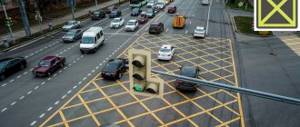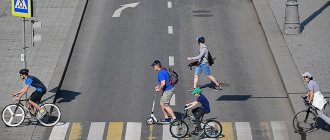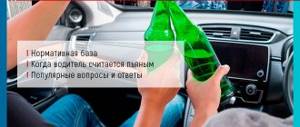The percentage of deaths resulting from accidents on public roads is the highest on the entire planet compared to airplane crashes, ship sinkings, etc. If there is a fatal accident, then there is someone who caused the accident. According to the law, he must be punished. This is regulated by Article 264 of the Criminal Code of the Russian Federation No. 63-FZ of June 13, 1996 (as amended on December 30, 2015). What preventive measure is applicable is decided only by the court, taking into account all the features of the incident, including aggravating or mitigating circumstances. Justice is not served only in two cases: if the culprit himself also died or if he reconciled with close relatives of the deceased.
How to act correctly at the scene of an accident so as not to aggravate the punishment?
If there was an emergency situation on the road and a person died in it, then the judge will issue a preventive measure to the culprit after some time. But this will not happen earlier than two or even three months after the day of the accident. The person who caused the tragedy on the road should know about some important nuances.
Firstly, if someone is hurt or injured as a result of an accident, then you need to immediately call an ambulance.
This must be done as a priority, because timely medical assistance can prevent the death of a seriously injured person. After calling the doctors, you need to call the police and insurance workers. Reference! If you neglect this rule, then during the trial the judge will apply not only a preventive measure related only to traffic violations, but also to criminal inaction.
And for this the punishment is more severe. Secondly, if as a result of an accident someone is hurt, injured or killed, under no circumstances should you drive away or leave the scene of the accident. It is important to remember that even if you become involved in an accident in which no one was injured, the driver will still be given a punishment, albeit an administrative one. It doesn’t matter who ran away or left the scene of the accident, the person’s license will still be confiscated or even taken into custody.
If the culprit of the accident realized that because of him there was an accident with the dead and quickly fled the scene of the crime, he will be put on the wanted list as a criminal, and when found, a more severe preventive measure will be imposed in court.
What will happen to the culprit?
A preventive measure for the culprit of an accident, which results in one or more deaths, is determined only if, after an investigation, it is proven that the death occurred precisely because of a collision of cars, and not because of a tragic combination of circumstances (for example, suddenly the blood clot came off).
- Through a technical examination, it is determined whether the permissible speed was exceeded on a particular section of the road and whether the driver technically had the opportunity to avoid an emergency situation. If the result is negative, according to Article 264 of the Criminal Code of the Russian Federation, he will not be held criminally liable. But he will be punished as a violator in accordance with Article 10.1 of the Traffic Rules, since under any circumstances he was obliged to do everything possible to reduce the speed, even stopping the vehicle.
- According to Article 264 of the Criminal Code of the Russian Federation, criminal liability is applicable only if the driver objectively had the opportunity to recognize the danger, as well as the technical ability to prevent an accident, but he did not do this, which resulted in consequences.
- According to paragraph 2.1.2 of the Russian Federation Traffic Regulations, if the court decides that the fatal outcome is not only the fault of the person responsible for the accident, who violated the Russian Traffic Regulations, but also the victim himself (he was not wearing a seat belt, he was not wearing a helmet while riding a motorcycle, etc. .), then this is taken into account as a mitigating circumstance. The only exception is the situation when the culprit did not take action to ensure the safety of passengers.
What determines the severity of the punishment?
Typically, this depends on the following circumstances:
- The condition of the vehicle at the time of the incident;
- Information about how often the person has previously violated traffic rules;
- Does the culprit have the right to drive a car?
- Age of the person responsible for the accident.
Aggravating circumstances also include exceeding the permitted speed, failure to provide assistance to a person injured in an accident, and also if the driver fled the scene of the accident.
Current legislation provides for criminal punishment only in the event of death as a result of an accident, or if injuries incompatible with life were sustained in a traffic violation. There are also situations when death does not occur immediately, but after a certain period of time.
It may also be that during the inspection no serious damage was found. In this case, a forensic medical examination is required to determine whether there is a cause-and-effect relationship between the accident and the person’s death.
It may turn out that death occurred as a result of a long illness or as a result of unforeseen circumstances, for example, a heart attack.
Also, as part of the trial, the speed of the car driven by the culprit is established (it is very important whether there was an excess of speed or whether there was no violation of the speed limit).
If the speed was within acceptable limits, the court orders an additional examination. As a result, it is established what actions the driver took, whether he could have prevented the accident, whether he tried to do it.
If it is established that the driver was unable to prevent the accident, his actions cannot be qualified under Art. 264 of the Criminal Code of the Russian Federation
Options for interpreting guilt
If during the investigation it is proven that the culprit had a premeditated intent to harm the victim, then the death will already be perceived as a murder committed with the help of a vehicle. The preventive measure in this case will be provided under the articles of the Special Part of the Criminal Code on crimes against the person.
Reference! For example, under Article 105 of the Criminal Code of the Russian Federation you can be imprisoned for 6 to 15 years.
But in practice, most often, a fatality resulting from an accident is interpreted as deprivation of life due to negligence. That is, when the accused had the opportunity to foresee the consequences, but he did not do so or did so, but not enough, due to criminal frivolity or negligence.
Punishment under Article 264 of the Criminal Code of the Russian Federation
If, as a result of the accident, a dead person or several persons are recorded, then the court will prosecute the culprit under Article 264 of the Criminal Code of the Russian Federation on violation of the rules of conduct on a public road and the use of motor vehicles.
- If the guilty person was under the influence of alcoholic substances, then he will not be able to get off with a suspended sentence. The court will apply a more severe preventive measure.
- If the death of only one person is recorded, the culprit may be sentenced to perform forced labor for up to 48 months, imprisoned for up to 60 months - part 3 of Article 264 of the Criminal Code of the Russian Federation. And if the offender was drunk, then he can be put behind bars for up to 7 years - paragraph 4 of Article 264 of the Criminal Code of the Russian Federation.
- If the accident results in two or more deaths, the perpetrator may be forced to perform forced labor for 60 months or imprisoned for a maximum of 7 years - paragraph 5 of Article 264 of the Criminal Code of the Russian Federation. But if he was also drunk, then he could actually be imprisoned for 4 to 9 years - paragraph 6 of Article 264 of the Criminal Code of the Russian Federation.
- In any situation, the culprit of a fatal accident, in addition to the main preventive measure, also receives an additional penalty - his rights are taken away for a period of six months to 36 months (this moment is described in Article 47 of the Criminal Code of the Russian Federation).
- If the offender is under the influence of alcohol at the time of the accident and has previously been administratively punished for this or even tried for driving drunk, then in addition to deprivation of his license for 36 months, he will be subject to an additional penalty depending on the situation: a fine sanction in the amount of 200-300 thousand rubles. (or in the amount of the total income of the perpetrator for 12 - 24 months) / performing compulsory labor for up to 480 hours / forced labor for up to 24 months / prison term for up to 24 months - paragraph 1 of Article 264 of the Criminal Code of the Russian Federation.
Note! If the offender admitted that he was guilty, and the proceedings were carried out in a special manner, that is, without the involvement of witnesses, then the preventive measure appointed by the judge cannot be more than 2/3 of the longest sentence specified in the relevant article of the Criminal Code of the Russian Federation.
Punishments provided for by the Criminal Code of the Russian Federation
What punishment can follow according to Art. 264 of the Criminal Code:
- in the case of the death of 1 person - forced labor or imprisonment for up to 5 years;
- if the accident occurred while the perpetrator was intoxicated, imprisonment for up to 7 years;
- if driving while intoxicated is not the first time - deprivation of a driver's license, a fine in the amount of 200 to 300 thousand rubles, forced labor or compulsory labor;
- if more than two people died in the accident - imprisonment for up to 9 years.
The minimum punishment will be as follows:
- if the driver was drunk - from 2 years in custody;
- if several people died - from 4 years in custody.
When during the trial it is established that the culprit had intent, another article is applied - 105 of the Criminal Code of the Russian Federation. It provides punishment for the intentional murder of one or more persons. In this case, the car will be the murder weapon. In this case, a more severe punishment is provided - up to 15 years in custody.
Extenuating circumstances
A mitigating sentence will be applied to the accused in the following cases:
- If the crime was committed of moderate gravity through negligence and for the first time. The maximum penalty for this exceeds 3 years in prison.
- If the accused has not yet reached the age of majority.
- If the offender is the father of small children.
- If the crime was committed as a result of official or financial dependence on a third party, as well as due to psychological coercion.
- If the crime was committed in excess of the necessary defense action or the perpetrator carried out an order or instruction.
- If the injured persons behaved immorally, which provoked the accident.
- If the offender filed a confession and took measures that successfully helped the progress of the investigation or the search for the stolen property (that is, the culprit actively cooperated with the investigator).
- If the culprit independently provided or tried to provide medical and other assistance before the arrival of doctors, and also if he voluntarily decided to compensate for material and moral damage to the relatives of the deceased.
All these circumstances are fully described in Article 62 of the Criminal Code of the Russian Federation. It also states that if they exist, the court has the right to reduce the term of imprisonment, but at the same time it must independently take into account the circumstances of the accident on an individual basis, which can mitigate the guilt of the offender.
A suspended sentence is not a sign of the application of a mitigating circumstance in relation to the perpetrator of a fatal accident. He can be appointed if, according to the law, the period of stay in prison is expected to be less than 8 years and the court recognizes that a person can reform “at large.”
Responsibility for a “drunk” fatal accident
In June 2021, criminal legislation regarding establishing liability for a fatal accident caused by a driver under the influence of alcohol was greatly tightened.
Firstly, all “drunken” cases with a fatal outcome were transferred from the category of acts of moderate gravity to serious ones.
Secondly, amendments were made to the sanctions of Article 264 of the Criminal Code of the Russian Federation, significantly increasing the terms of imprisonment for such crimes. Now, for someone who drinks and drives and is hit to death, they can get up to 12 years in prison, and for two or more people killed – up to 15. At the same time, as practice shows, suspended sentences in such cases are assigned less and less , although, in accordance with By law, such a possibility exists, especially in the presence of mitigating circumstances.
Aggravating circumstances
Circumstances that have a negative impact on the car owner who caused the accident, that is, aggravate his guilt, in which two or more people lost their lives, are regulated by Article 63 of the Criminal Code of the Russian Federation. These include:
- Intentional murder (Recidivism).
- Drunk driving accidents and deaths are taken into account first.
- Particularly active role in a criminal event, etc.
The judicial authority has every right to recognize as aggravating any actions that are proven as a result of the preliminary investigation and discredit the perpetrator (taking narcotic, psychotropic substances, etc.).
Guilt
To determine the culprit of the accident, whose actions led to human casualties, consider:
- The circumstances of a particular case by traffic inspectors are at the scene of the incident with the drawing up of a protocol and diagram of the accident. During the investigation, it is possible to conduct automotive technical and forensic examinations to accurately determine the condition of vehicles, the length and trajectory of the braking distance, etc.;
- Nature of injuries and damage . The connection between the death and the accident is established by a forensic medical examination. If a fatality as a result of an accident did not occur as a result of a collision with a car, the driver will not be held liable for it;
- The driver’s condition for the presence of alcohol , other narcotic and psychotropic substances in the blood. If the driver refuses the examination, regardless of the reasons for the refusal, he is considered drunk;
- In an accident involving a pedestrian , the condition and behavior of the pedestrian.
Only the court has the right to establish guilt in a fatal accident and pass a sentence, taking into account the details of the case, the presence of aggravating and mitigating factors. If the culprit of the accident dies, the remaining participants in the incident are not liable.
Reconciliation with the injured party
If during the trial the crime committed is considered in terms of severity to be minor or medium, which the culprit committed for the first time, then, according to Article 76 of the Criminal Code of the Russian Federation, reconciliation between the victim and the guilty party will become possible.
Of course, it will no longer be possible to pay anything to a person who died as a result of an accident. But he will be represented by his close relatives or guardians. If the injured party files a motion to dismiss the case due to reconciliation, the case is immediately closed.
However, termination of a criminal case for reconciliation of two parties in accordance with Article 25 of the Code of Criminal Procedure of the Russian Federation is only a right, and not an obligation of the court. Along with this, he must pay full attention to:
- The social danger of the crime committed.
- Personal information about the culprit of the accident.
- The fact of exerting pressure on the injured party.
- What measures did the offender take to make amends for the damage caused, etc.
Reference! We must not forget that the family of the deceased is guaranteed to receive payments under compulsory motor liability insurance and the culprit does not need to do anything of his own free will for this. In Article 7 of the current edition of Federal Law No. 40-FZ dated April 25, 2002 “On compulsory motor liability insurance for car owners”, the insurance company under the compulsory motor liability insurance policy can make the maximum payment as compensation for damage caused:
- 500 thousand rubles. for each victim - if their health or life was affected.
- 400 thousand rubles. for each victim - if property is damaged.
You cannot drive a car while drunk. Even if the irreversible happens and a person becomes guilty of the death of another person, he will have a chance not to go to prison, but to remain free. And if he is under the influence of alcohol at the time of the accident, then he will not see “freedom” for at least 2 years. Moreover, even if there is a whole list of circumstances that can mitigate the punishment.
Leaving the scene of an accident
The State Traffic Safety Inspectorate often encounters cases where the culprit of an accident on the road escapes from the scene of the crime. Most often this happens when you hit a person who is crossing the road or drive a car while drunk.
Reference! For fleeing the scene of an accident, only administrative liability is applied. This is indicated in part 2 of article No. 12.27 of the Code of Administrative Offenses of the Russian Federation.
But if in such a case there are injuries or deaths, the court will take this into account as an aggravating circumstance, unless, of course, in the future the culprit comes to confess to the law enforcement agency.









